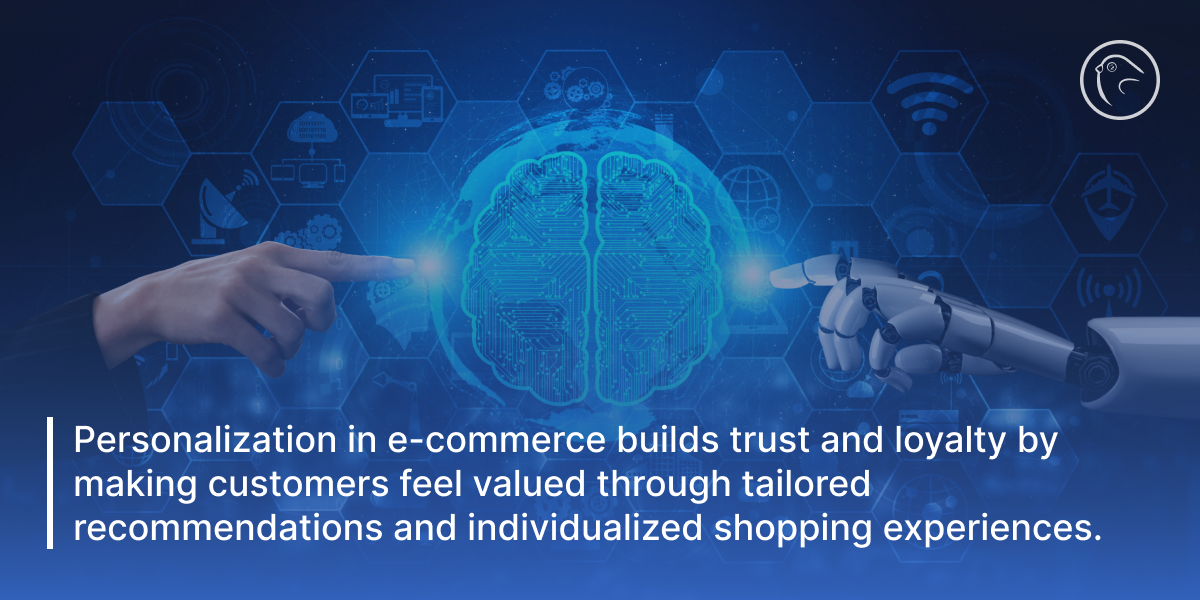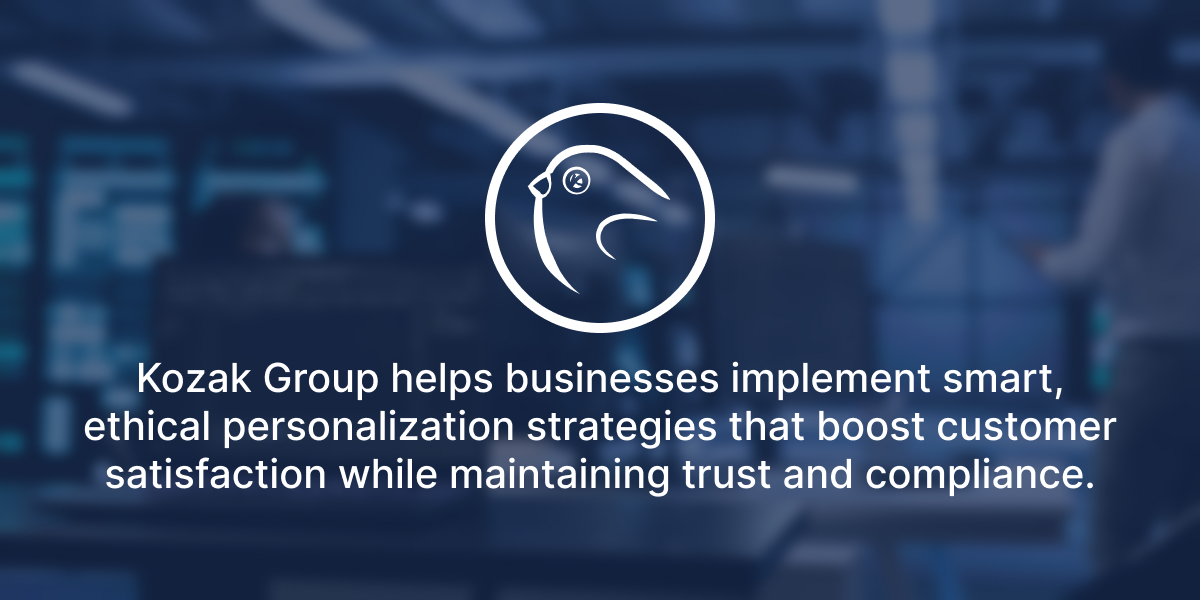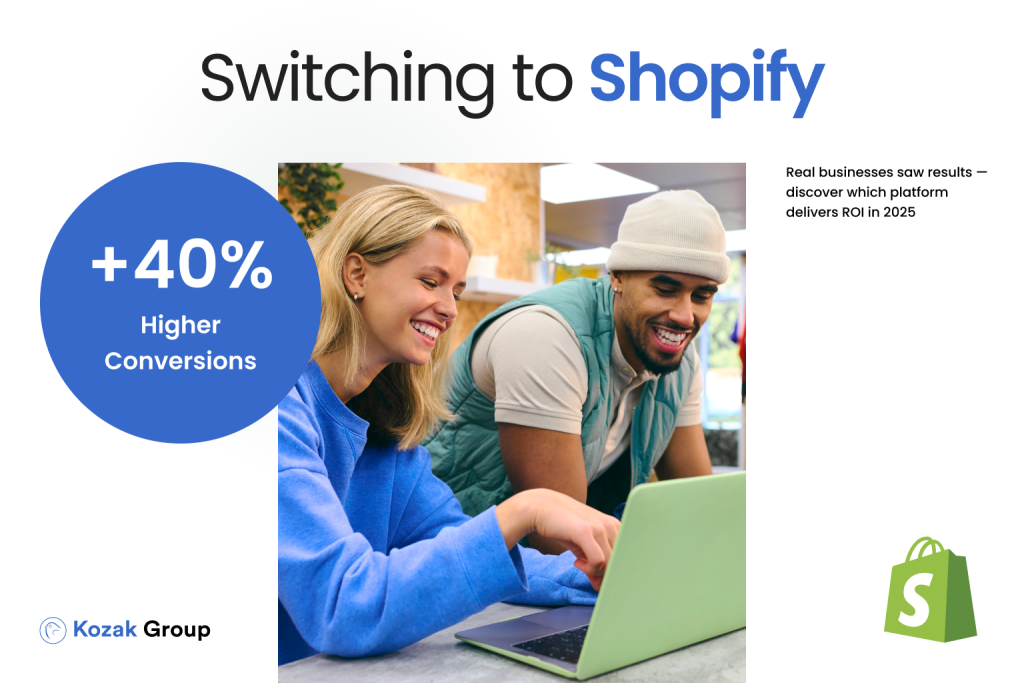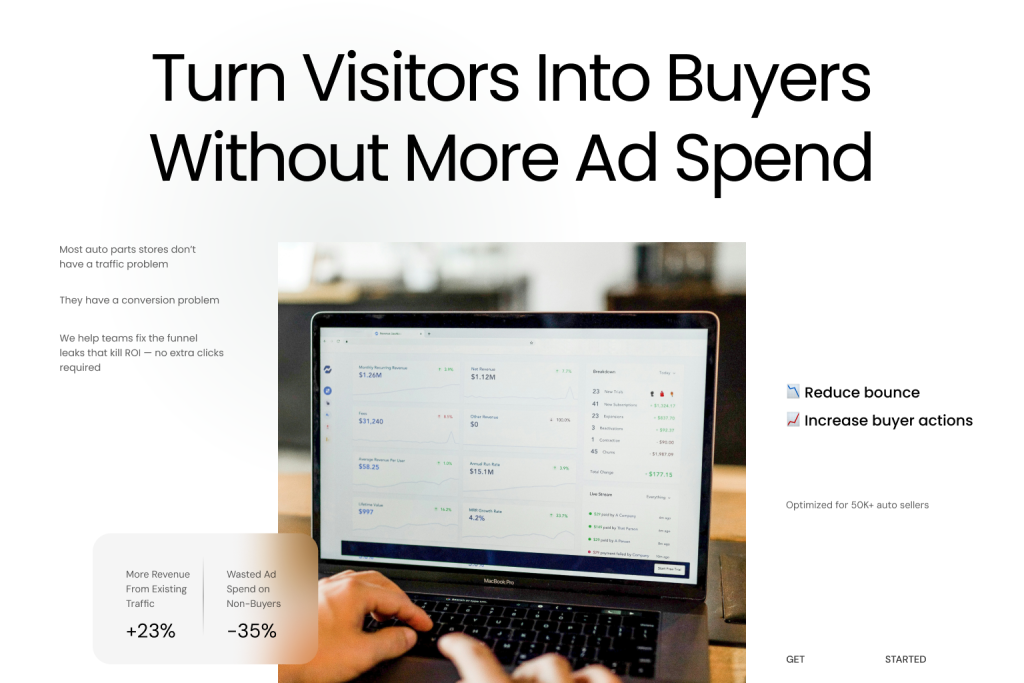Stop for a moment and picture your favorite shop. When you step in, an assistant approaches and personally greets you, followed by helping you with your precise recommendations. Amazing, right? This is where the world of personalization comes in – it is no longer exclusive to physical stores. When it comes to e-commerce, customers expect personalization.
As per a study by McKinsey, over 70% of consumers anticipate businesses to offer personalized engagement. Companies big and small know that they have a lot more to gain from personalized interactions. The revenue increases by 40%. This simple yet powerful tactic is harnessed by only a handful of businesses.
That is the gap that Kozak Group intends to fill. Our experienced team aids you in driving your e-commerce without getting stuck in rounds of data, algorithms, and complexities. To us, personalization is deeply understanding consumer behavior, foreseeing their needs and building long-lasting relationships with them. We do not make use of complex algorithms. Instead, we combine our technology with a rich consumer understanding. This helps e-commerce brands flourish in competitive situations.
With this write-up, we will analytically explore the reason why personalization is now a ‘must apply’ trick, rather than an option for business. So, are you ready to take your customer experience to the next level? Let’s plunge in.
How Personalization Works
At its most basic, personalization serves to exploit the base truth of all humanity – the need for recognition and appreciation. Personalization starts from being heard to a particular person’s name being called out amidst a multitude to even receiving customized suggestions. It is great to hear one’s name being called out from across a room; it makes one feel relevant. In a Salesforce study, approximately two-thirds of the people surveyed stated that they expect businesses to know how to cater to their individual needs, while more than half said that appreciation is critical and that they would stop patronizing a business if felt taken for granted.
Such a relation with the customer exists in e-commerce where customer experiences are made to feel like the arms of a store associate, one customer has great trust and love for. When customers see curated product suggestions or even timely reminders, they tend to feel understood. Such experiences encourage trust and loyalty from the clients as well. Such friendly relationships, even on a digital platform, go beyond just selling products.
The Modern Shift
Thanks to AI and big data, personalization went from being an optional feature to a core strategy. Nowadays, hyper-personalization refers to much more than just showing user-specific, ‘recommended for you’ portals. By looking at countless data points like where someone is browsing from, where they shopped from, where they live, and even when during the day it is, AI-powered systems will recommend products even before the customer has thought about it.
Machine learning algorithms are put to remarkable use in the creation of playlists by Spotify’s new feature, Discover Weekly. Over forty percent of users trust the platform with their preferences and use these custom playlists to listen to over ten tunes weekly.
The result?
This feature has carved a niche for Spotify as the leading curator of personalized user content.
Similar systems predict the use of spending patterns to deliver more effective real-time solutions such as personalized and targeted pricing and even landing pages. In return, these innovations maximize customer satisfaction while allowing brands to stay relevant in a digitized world that continues to change at a rapid pace.
With the rise of fan engagement technologies we all seek to provide better customer experience, but emotional loyalty versus transactional loyalty has come to the fore. Transactional loyalty, motivated by discounts, deals, or mere convenience has its shortcomings. Customers resort to competitors the instant they provide better pricing or quicker service. Concentrating on providing even basic personalization can, however, create a far stronger brand loyalty – emotional loyalty that is long-lasting.
A study by Deloitte showed that people emotionally invested in a brand are more than twice as likely to make an additional purchase while suggesting the brand to others four times more. So, the question comes, why precisely? Personalized relationships convert transactional ones into more humanized interactions.
Consider a subscription box service that offers a special discount on your birthday or a handwritten note thanking you for your loyalty. These small acts go beyond the product- they create value and build on deeper bonds of connection. This way, customers feel valued rather than a number which enhances customer retention.
Advanced Methods of E-Commerce Personalization
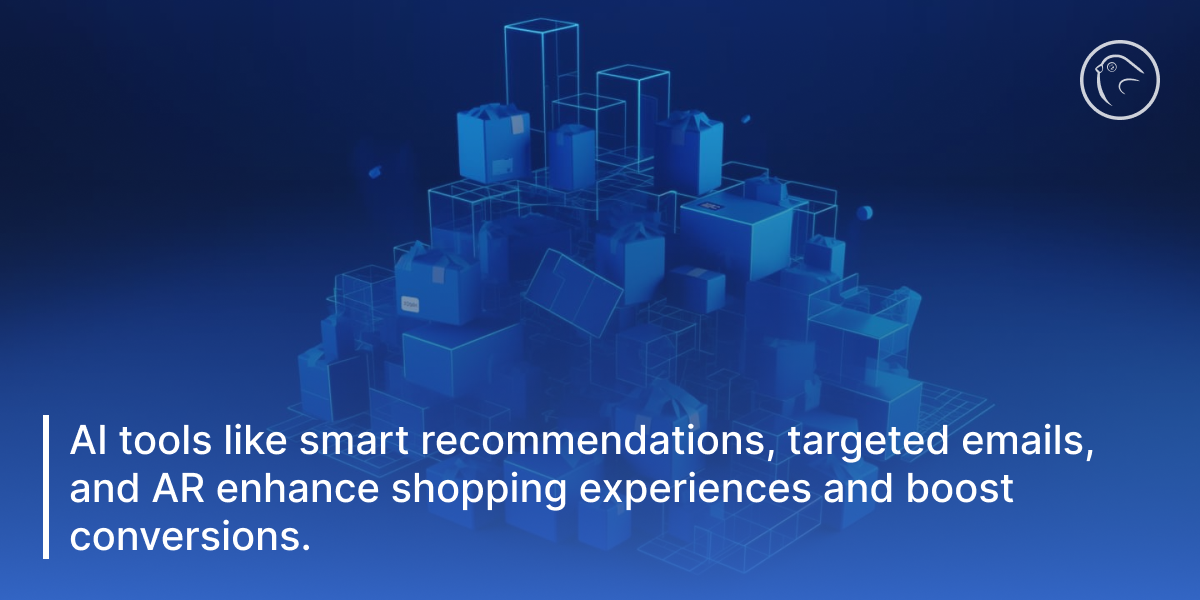
Dynamic Product Recommendations
Think about logging into an online store and instantly seeing the products that fit your interests, previous purchases, and online searches. AI-enhanced software can achieve this by sifting through large amounts of data to provide the information that buyers seek.
Consider the ‘Frequently bought together’ feature on Amazon – It employs collaborative filtering algorithms to make product recommendations. For instance, when a user purchases a laptop, the recommendations created include a laptop bag and a mouse. This tactic increases the cumulative purchase value. Likewise, Netflix made an entertaining shift to predictive algorithms, analyzing previous viewing history and suggesting what the user can view next, ultimately increasing user engagement.
Dynamic recommendations of the products have been shown to consistently improve conversions and overall user experience. At Kozak Group, we aid brands in employing the latest AI technologies to guarantee that their customers always feel as if the store is tailored for them.
Hyper-Segmented Email Marketing
Those days have passed when blanket email blasts were the norm. With hyper-segmented campaigns, it is now possible to send the correct message to the specific audience at the preferred time. By categorizing the customers based on behavior, demographics, or purchasing patterns, brands can craft highly relevant and entertaining email content.
To illustrate, a customer who left a cart may receive an email attempting to persuade him to buy those items by offering a discount. Someone who is a loyal client might receive a preview of the latest collection before anyone else. Segmented email campaigns lead to a 760% increase in revenue as stated by Campaign Monitor.
Tailored Pricing and Promotions
Instead of a one-size-fits-all approach, why not have specific deals for specific customers? Dynamic pricing enables businesses to set a price based on the customer’s loyalty, how many times they’ve purchased, or even the customer’s demand at that moment. For instance, some members may have frequent buyer-exclusive discounts, and some first-time visitors may receive a welcome coupon.
Geographically targeted discounts provide a more refined touch. For instance, a store could offer rain gear at a discount for customers who are based in rainy regions, and sunscreen at a discount for hot areas. These strategies are smart as they help brands target a broad audience and further expand their needs.
Customized User Interfaces (UI)
Outdated is any website that caters to every person. Nowadays, eCommerce websites can incorporate real-time updates that shift over to the customers’ particular preferences. Tailor-made UIs actively engage customers and lower the chances of them abandoning the page by altering product arrangements, banners, and even color palettes to fit the users’ tastes.
For instance, an eCommerce website could change from light to dark mode depending on the user preferences, or showcase highly the season’s collections for returning shoppers. ASOS uses advanced dynamic homepage features that highlight products based on users’ interests or trends.
With the help of Kozak Group, your website can turn into an interactive tool crafted to the specific needs of every visitor.
Try-On Simulation and Augmented Reality (AR)
AR Technology has aided in overcoming arguably the biggest drawback in online shopping, which is the inability to actually try on a product. Now, customers can create a real-world vision of the products they intend to purchase.
This has been embraced by brands such as IKEA through their IKEA Place app, which gives users the ability to see what furniture would look like in their homes. For makeup, Sehonra’s Virtual Artist provides a comparable feature that allows customers to try various shades before any product is used. AR has the capability of increasing conversion rates as demonstrated by Gartner, where they project an increase of 40%.
Behavioral Based-Friendly Chatbots
Rather than simply responding to FAQs, chatbots are increasingly evolving into virtual shopping guides. They analyze user interactions and provide tailored recommendations, fulfill specific requests, or even assist in shopping now.
For instance, while a customer looks for sneakers, the chatbot can recommend socks or cleaning kits that would go with the shoes. These tools of conversation-driven commerce elevate the shopping process and help fulfill business objectives by engaging customers actively. Kozak Group can assist you in deploying advanced chatbots that are more like virtual teammates rather than machines.
Subscription Box Adjustments
Subscription boxes are all about personal touch. Companies such as Stitch Fix and FabFitFun base the boxes they send on detailed user profiles ensuring each one feels curated for the individual. From clothes to beauty products and even less popular niches, most customers will remain satisfied if their products are tailored to their preferences.
With Kozak Group’s assistance, you will be able to design subscription experiences that intrigue and impress your customers making them lifelong fans of your brand.
Personalization for Social Commerce
Focusing on personalization on platforms like Instagram, TikTok, and Pinterest can range from simple dynamic ads directed toward the user’s interests to more extensive influencer advertising campaigns. Social media is not only for engagement anymore, but it is developing into an e-commerce platform too.
As a user who searches for yoga mats, you may come across TikTok ads that showcase different mats in your popular color. The precise algorithm for which TikTok is famous can display e-commerce-oriented content that resonates with the viewers.
Common Missteps and Challenges
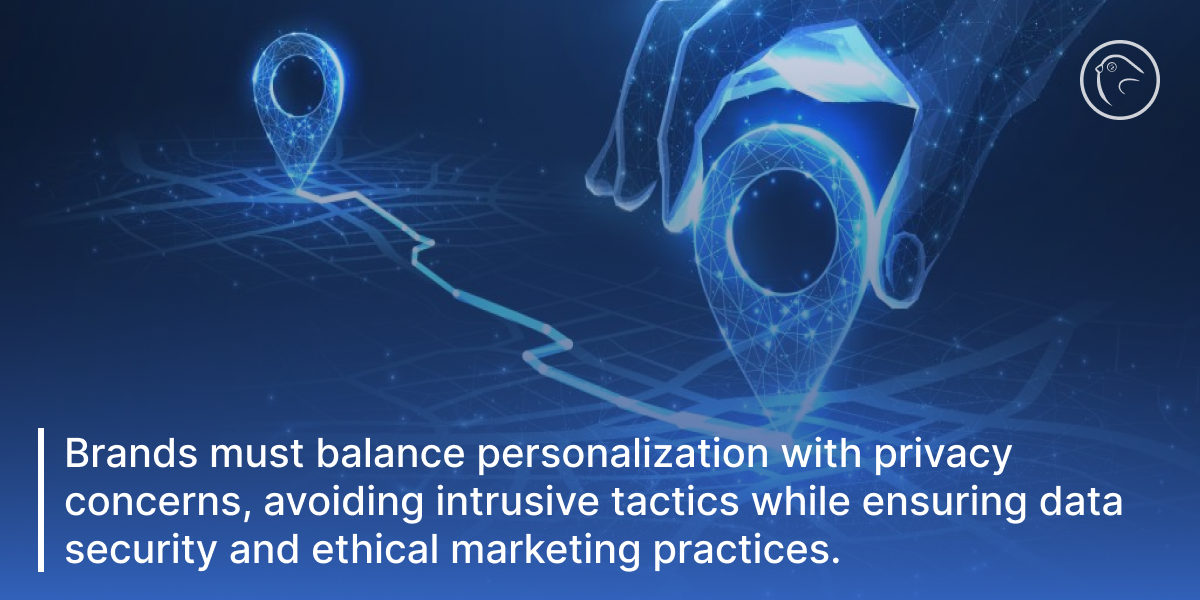
The Privacy Controversy
Whether advertisers want it or not, the personalization process makes it impossible to avoid using information or data of some sort, albeit with limitations and conditions. While people are thankful for customized services, they are growing concerned with how businesses are handling their information. Cisco’s survey reveals that 79% of people are willing to boycott brands should they ever feel that their information is not being handled properly.
GDPR (General Data Protection Regulation) and CCPA (California Consumer Privacy Act) provide the needed cover for customers by setting limits on how businesses should go about gathering, safeguarding, and utilizing data. However, the passing of these regulations does not work like magic. Customers want more than mere compliance.
This is what e-commerce brands should do:
- Set clear objectives for the types of data that businesses want to collect, and procedures to be followed for such collection.
- Develop a user-friendly interface that allows customers to choose whether they want to receive marketing messages or not.
- Invest in technology that fortifies the protection of sensitive data from unauthorized access.
If done correctly, privacy compliance can earn customer confidence. At Kozak Group, we provide assistance to help brands fulfill privacy obligations while implementing customer-focused, ethical personalization solutions.
Over-Personalization: When It Feels Intrusive
The fine line between useful and invasive is crossed when personalization is harmful. Have you ever had an advertisement that popped up for something you had previously talked about? This can feel bordering on offensive. Gartner research shows that 38% of clients will stop dealing with a business if they view their personalization strategies as, ‘off-putting.’
- The goal is to achieve this equilibrium. Personalization should not feel calculated or robotic, rather it needs to feel organic and respectful. For example:
- Do not bombard clients with suggested products after an initialsearch.
- Pay attention to trends instead of micro-level auditing.
- Restrict the use of sensitive personal information such as geographical locations when it is necessary.
At Kozak Group, we make the effort to tailor the strategies in a way that does not cross a line remains intuitive without being intrusive and delivers more value without offense.
Keeping It Human: Automation with a Personal Touch
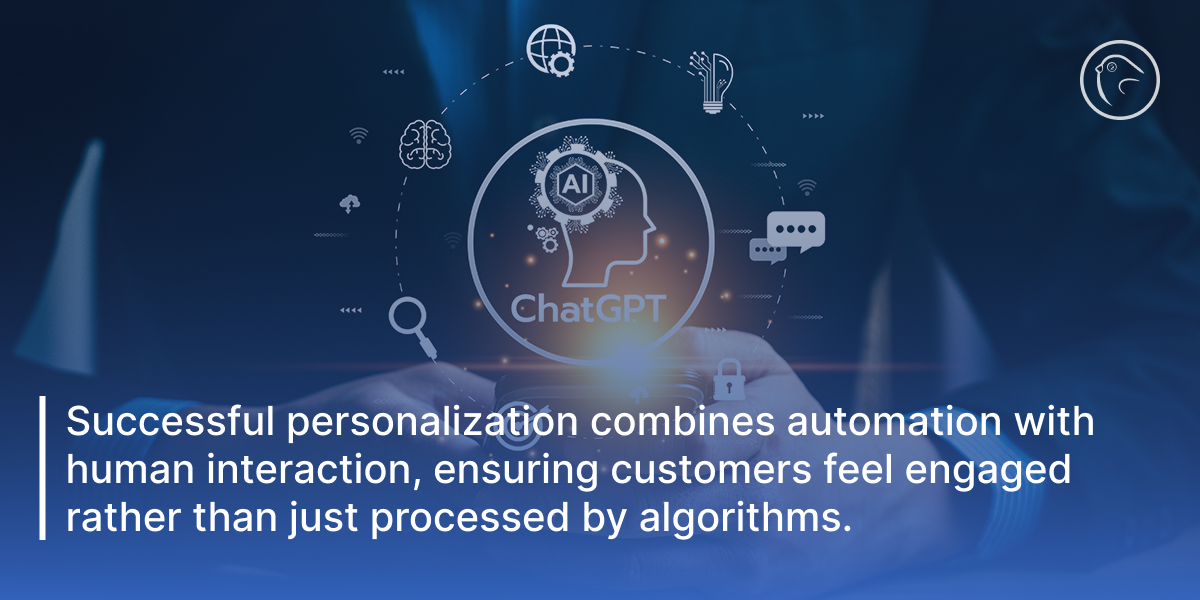
Making Sure Business Interactions Stay Personal:
- Combine advanced technology with staff support for highly specific inquiries.
- Make sure the desired tone is friendly and easygoing as opposed to extremely polite and stiff.
- Add a level of uniqueness, such as handwritten cards or even a simple ‘hi’ in a chat box, to emphasize the human behind the business.
- Kozak Group works with businesses to create unique automation processes that aid in improving customer relations, while also maintaining the human touch that promotes confidence and trust.
Partnering with Kozak Group to Convert Challenges into Opportunities
Personalization from businesses can go a long way, but it must be done in the right way. Businesses have to be careful about privacy, overreaching, and relationships with clients, and keeping these factors in check will go a long way in improving overall brand reputation.
Aren’t sure how to overcome the obstacles while delivering personalized services? At Kozak Group, we do not emphasize business overlearning, we turn strategy into good practice and aid in elevating your brand’s reputation. Let’s make branded future amazing.
For further insights on personalization in e-commerce, you might find this article helpful:
The Future of Personalization: Predictive Analytics and Machine Learning in E-commerce



